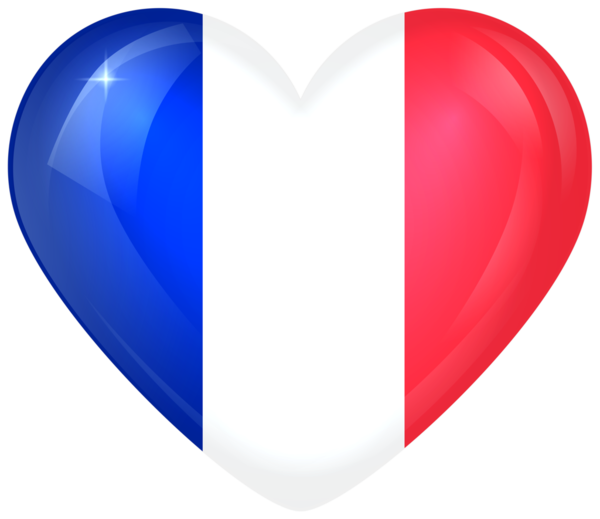
A Beginner’s Guide to Colors in French: Grammar, Usage, and Examples
September 1, 2024
Mastering French Numbers 1-100 for A1
September 2, 2024Mastering Basic French Greetings for A1
Learning basic French vocabulary greetings is one of the first and most important steps in mastering any language, including French. At the A1 level, being able to greet others, introduce yourself, and say goodbye is essential for building a strong foundation in French. In this comprehensive guide, we will cover the most common French greetings, provide examples, and explain how to use them in different contexts. We will also touch on cultural aspects and include practice exercises to help reinforce your learning. By the end of this article, you’ll be well-equipped to greet people confidently in French vocabulary.
Why Are Greetings Important?
Greetings are an essential part of daily communication. They allow you to start conversations, show respect, and create a positive impression. In French-speaking cultures, as in many others, using the correct greeting is crucial in both formal and informal settings. Knowing when to use a formal greeting versus an informal one can make a big difference in how you are perceived.
Common French Greetings and Their Uses
Here is a list of some of the most common French greetings, along with explanations of when and how to use them.
1. Bonjour (Hello / Good Morning)
“Bonjour” is the most common and versatile greeting in French. It can be used throughout the day, from morning until the late afternoon. It’s appropriate in both formal and informal settings, making it a safe choice in almost any situation.
Examples:
- Bonjour, comment ça va ? (Hello, how are you?)
- Bonjour, monsieur/madame. (Hello, sir/madam.)
- Bonjour, je m’appelle Marie. (Hello, my name is Marie.)
2. Salut (Hi)
“Salut” is an informal greeting used among friends, family, and people of the same age group. It’s equivalent to saying “hi” in English. Unlike “bonjour”, “salut” can be used at any time of day but should be reserved for casual situations.
Examples:
- Salut, ça va ? (Hi, how are you?)
- Salut, Jean ! (Hi, Jean!)
- Salut tout le monde ! (Hi everyone!)
3. Bonsoir (Good Evening)
“Bonsoir” is used to greet someone in the evening, typically after 6 PM. Like “bonjour”, it can be used in both formal and informal situations. It’s a polite way to say hello when you meet someone in the evening.
Examples:
- Bonsoir, comment s’est passée ta journée ? (Good evening, how was your day?)
- Bonsoir, madame. (Good evening, madam.)
- Bonsoir, tout le monde ! (Good evening, everyone!)
4. Bonne nuit (Good Night)
“Bonne nuit” is used to say goodnight, usually before going to bed. It’s a farewell expression rather than a greeting, and it’s used when you or someone else is about to sleep.
Examples:
- Bonne nuit, à demain. (Good night, see you tomorrow.)
- Bonne nuit, dors bien. (Good night, sleep well.)
- Bonne nuit, les enfants. (Good night, kids.)
5. Enchanté(e) (Nice to Meet You)
“Enchanté” (masculine) or “Enchantée” (feminine) is used when you meet someone for the first time. It’s a polite and friendly way to express that you are pleased to meet someone.
Examples:
- Bonjour, je m’appelle Pierre. Enchanté. (Hello, my name is Pierre. Nice to meet you.)
- Enchantée de vous rencontrer. (Nice to meet you.)
- Je suis enchanté de faire votre connaissance. (I am pleased to make your acquaintance.)
6. Comment ça va ? / Ça va ? (How are you? / How’s it going?)
“Comment ça va ?” or the shorter “Ça va ?” is a common way to ask someone how they are doing. “Comment ça va ?” is slightly more formal than “Ça va ?”, but both can be used in most situations.
Examples:
- Salut, ça va ? (Hi, how’s it going?)
- Bonjour, comment ça va aujourd’hui ? (Hello, how are you today?)
- Ça va, merci. Et toi ? (I’m good, thanks. And you?)
7. Merci (Thank you)
“Merci” is the standard way to say “thank you” in French. It’s an essential word in any conversation, whether you’re expressing gratitude for something small or significant.
Examples:
- Merci beaucoup. (Thank you very much.)
- Merci, c’est gentil. (Thank you, that’s kind.)
- Merci pour votre aide. (Thank you for your help.)
8. Au revoir (Goodbye)
“Au revoir” is the most common way to say “goodbye” in French. It’s suitable for all situations, whether formal or informal. This phrase literally means “until we see each other again.”
Examples:
- Au revoir, à demain. (Goodbye, see you tomorrow.)
- Au revoir, monsieur/madame. (Goodbye, sir/madam.)
- Au revoir, passez une bonne journée. (Goodbye, have a good day.)
9. À bientôt (See you soon)
“À bientôt” is used when you expect to see the person again soon. It’s a friendly and informal way to say goodbye.
Examples:
- À bientôt, Marie ! (See you soon, Marie!)
- Merci, à bientôt. (Thanks, see you soon.)
- Je dois y aller. À bientôt ! (I have to go. See you soon!)
10. À demain (See you tomorrow)
“À demain” is used when you know you will see the person the next day. It’s commonly used in both personal and professional settings.
Examples:
- Bonne soirée, à demain. (Have a good evening, see you tomorrow.)
- On se voit demain ? À demain ! (Are we meeting tomorrow? See you tomorrow!)
- À demain, tout le monde. (See you tomorrow, everyone.)
Cultural Aspects of French Greetings
- Formality vs. Informality: In French-speaking cultures, the distinction between formal and informal greetings is important. “Bonjour” and “Bonsoir” are versatile and polite, while “Salut” is reserved for friends, family, and peers. Using the wrong greeting can be seen as disrespectful, so it’s essential to gauge the level of formality required in each situation.
- La Bise: In many French-speaking regions, particularly in France, it’s common to greet someone with a “bise” (a light kiss on each cheek). This is more common among friends and family and less so in formal situations. The number of kisses and when it’s appropriate to do so can vary by region.
- Time-Specific Greetings: While “Bonjour” can be used from morning until late afternoon, “Bonsoir” takes over in the evening. Using “Bonsoir” in the daytime or “Bonjour” at night can seem strange, so it’s important to be aware of the time when greeting someone.
Practice Exercises
Here are some exercises to help reinforce your understanding of basic French greetings:
1. Match the French Greeting with Its English Equivalent:
- Bonjour
- Salut
- Bonsoir
- Au revoir
- Merci Answers:
- Bonjour – Hello / Good Morning
- Salut – Hi
- Bonsoir – Good Evening
- Au revoir – Goodbye
- Merci – Thank you
2. Fill in the Blanks with the Correct French Greeting:
- __, comment ça va ?
- __, à demain.
- __, je m’appelle Jacques. Enchanté.
- __, madame. Comment allez-vous ?
- __, Pierre ! Ça fait longtemps ! Answers:
- Bonjour, comment ça va ?
- Au revoir, à demain.
- Bonjour, je m’appelle Jacques. Enchanté.
- Bonsoir, madame. Comment allez-vous ?
- Salut, Pierre ! Ça fait longtemps !
3. Translate the Following Sentences into French:
- Good night, sleep well.
- See you tomorrow, have a good day.
- Hi, how are you?
- Goodbye, thank you very much.
- Nice to meet you, I’m Marie. Answers:
- Bonne nuit, dors bien.
- À demain, passe une bonne journée.
- Salut, ça va ?
- Au revoir, merci beaucoup.
- Enchantée, je suis Marie.
Conclusion
Mastering basic French greetings is a crucial step in your language-learning journey. These greetings not only help you start conversations but also play a significant role in making good impressions and showing respect in French-speaking cultures. By understanding the different greetings, when to use them, and how to respond, you’ll be able to navigate social interactions in French more confidently.
Remember to practice these greetings regularly, both in writing and speaking, to reinforce your learning. Use the exercises provided in this guide to test your knowledge and improve your fluency. With consistent practice, you’ll soon be greeting others in French with ease and confidence. Bonne chance (good luck) on your journey to mastering French greetings!

